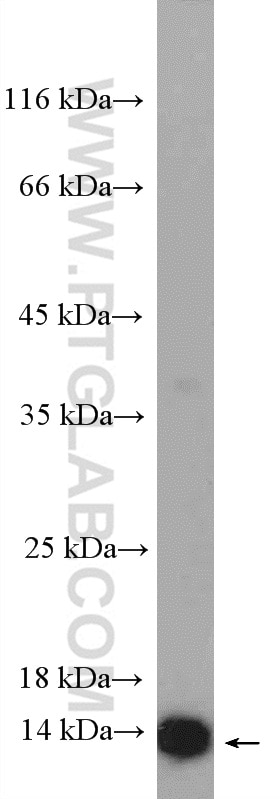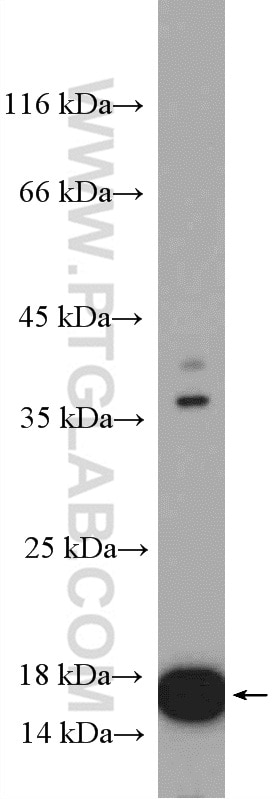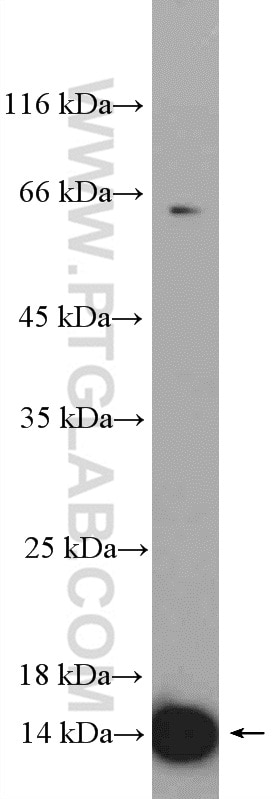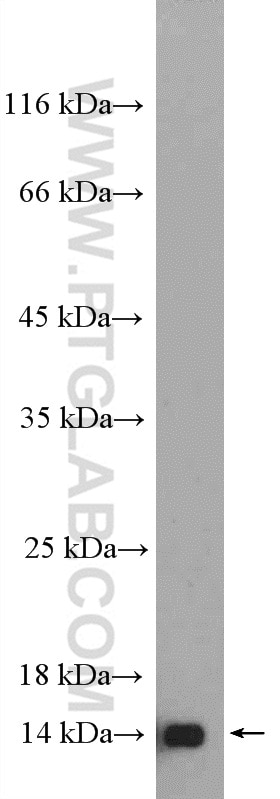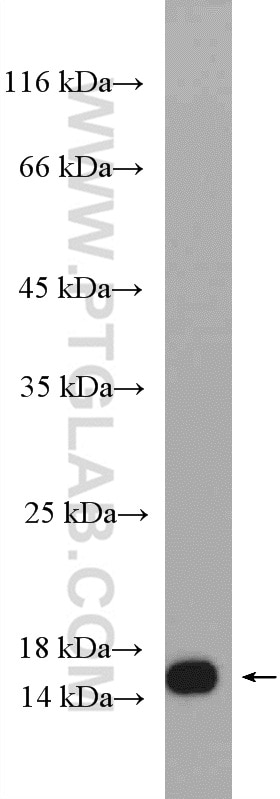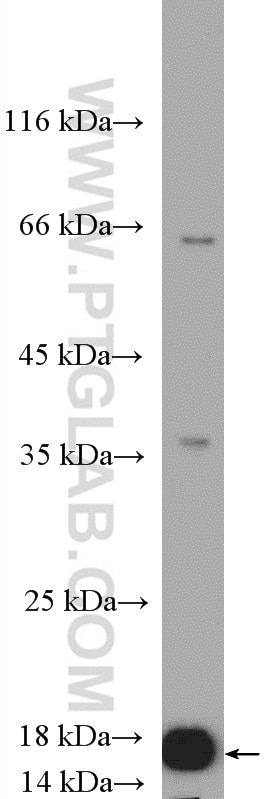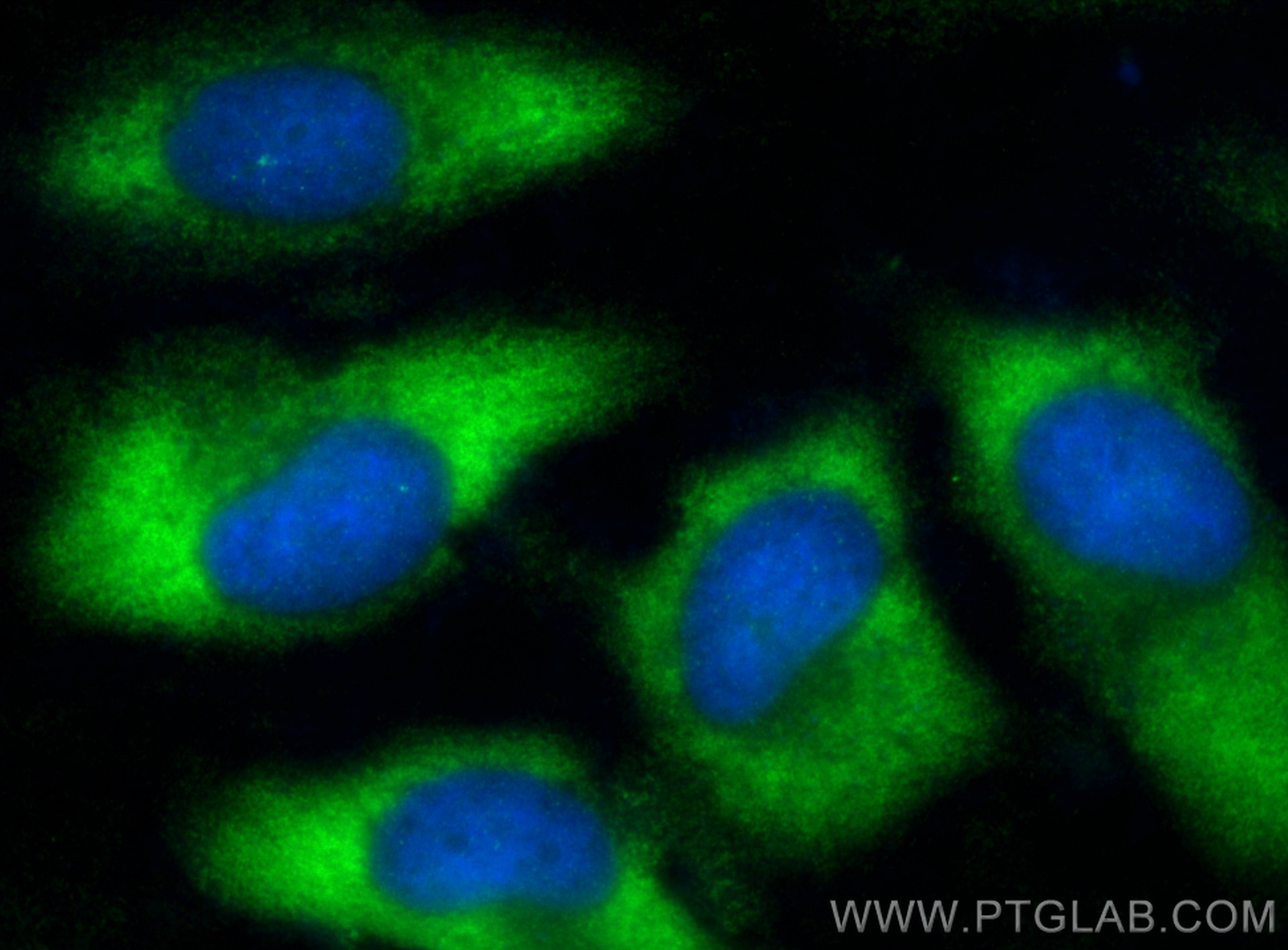Tested Applications
| Positive WB detected in | PC-12 cells, BxPC-3 cells, HeLa cells, HepG2 cells, NIH/3T3 cells |
| Positive IF/ICC detected in | HeLa cells |
Recommended dilution
| Application | Dilution |
|---|---|
| Western Blot (WB) | WB : 1:500-1:1000 |
| Immunofluorescence (IF)/ICC | IF/ICC : 1:200-1:800 |
| It is recommended that this reagent should be titrated in each testing system to obtain optimal results. | |
| Sample-dependent, Check data in validation data gallery. | |
Published Applications
| WB | See 3 publications below |
Product Information
15145-1-AP targets RPL36 in WB, IF/ICC, ELISA applications and shows reactivity with human, mouse, rat samples.
| Tested Reactivity | human, mouse, rat |
| Cited Reactivity | human, mouse |
| Host / Isotype | Rabbit / IgG |
| Class | Polyclonal |
| Type | Antibody |
| Immunogen |
CatNo: Ag7437 Product name: Recombinant human RPL36 protein Source: e coli.-derived, PGEX-4T Tag: GST Domain: 1-105 aa of BC003052 Sequence: MALRYPMAVGLNKGHKVTKNVSKPRHSRRRGRLTKHTKFVRDMIREVCGFAPYERRAMELLKVSKDKRALKFIKKRVGTHIRAKRKREELSNVLAAMRKAAAKKD Predict reactive species |
| Full Name | ribosomal protein L36 |
| Calculated Molecular Weight | 12 kDa |
| Observed Molecular Weight | 12-14 kDa |
| GenBank Accession Number | BC003052 |
| Gene Symbol | RPL36 |
| Gene ID (NCBI) | 25873 |
| RRID | AB_2878111 |
| Conjugate | Unconjugated |
| Form | Liquid |
| Purification Method | Antigen affinity purification |
| UNIPROT ID | Q9Y3U8 |
| Storage Buffer | PBS with 0.02% sodium azide and 50% glycerol, pH 7.3. |
| Storage Conditions | Store at -20°C. Stable for one year after shipment. Aliquoting is unnecessary for -20oC storage. 20ul sizes contain 0.1% BSA. |
Background Information
RPL36, also named as 60S ribosomal protein L36, is a 105 amino acid protein, which is a component of the large ribosomal subunit. RPL36 may be involved in the early stage of hepatocarcinogenesis, and it can be used as an independent and potential prognostic marker for resected HCC.
Protocols
| Product Specific Protocols | |
|---|---|
| IF protocol for RPL36 antibody 15145-1-AP | Download protocol |
| WB protocol for RPL36 antibody 15145-1-AP | Download protocol |
| Standard Protocols | |
|---|---|
| Click here to view our Standard Protocols |
Publications
| Species | Application | Title |
|---|---|---|
J Pineal Res Amelioration of gamma irradiation-induced salivary gland damage in mice using melatonin | ||
Cell Mol Life Sci Proteomics-based characterization of ribosome heterogeneity in adult mouse organs | ||
Nat Cell Biol METTL3 preferentially enhances non-m6A translation of epigenetic factors and promotes tumourigenesis |

